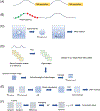Technical advances in motion-robust MR thermometry
- PMID: 38501903
- PMCID: PMC11132643
- DOI: 10.1002/mrm.30057
Technical advances in motion-robust MR thermometry
Abstract
Proton resonance frequency shift (PRFS) MR thermometry is the most common method used in clinical thermal treatments because of its fast acquisition and high sensitivity to temperature. However, motion is the biggest obstacle in PRFS MR thermometry for monitoring thermal treatment in moving organs. This challenge arises because of the introduction of phase errors into the PRFS calculation through multiple methods, such as image misregistration, susceptibility changes in the magnetic field, and intraframe motion during MRI acquisition. Various approaches for motion correction have been developed for real-time, motion-robust, and volumetric MR thermometry. However, current technologies have inherent trade-offs among volume coverage, processing time, and temperature accuracy. These tradeoffs should be considered and chosen according to the thermal treatment application. In hyperthermia treatment, precise temperature measurements are of increased importance rather than the requirement for exceedingly high temporal resolution. In contrast, ablation procedures require robust temporal resolution to accurately capture a rapid temperature rise. This paper presents a comprehensive review of current cutting-edge MRI techniques for motion-robust MR thermometry, and recommends which techniques are better suited for each thermal treatment. We expect that this study will help discern the selection of motion-robust MR thermometry strategies and inspire the development of motion-robust volumetric MR thermometry for practical use in clinics.
Keywords: magnetic resonance thermometry; motion correction; motion robust; proton resonance frequency shift; real‐time MRI.
© 2024 The Authors. Magnetic Resonance in Medicine published by Wiley Periodicals LLC on behalf of International Society for Magnetic Resonance in Medicine.
Conflict of interest statement
CONFLICT OF INTEREST STATEMENT
None to report.
Figures




Similar articles
-
Observation and correction of transient cavitation-induced PRFS thermometry artifacts during radiofrequency ablation, using simultaneous ultrasound/MR imaging.Med Phys. 2010 Apr;37(4):1491-506. doi: 10.1118/1.3309439. Med Phys. 2010. PMID: 20443470
-
Temperature-induced tissue susceptibility changes lead to significant temperature errors in PRFS-based MR thermometry during thermal interventions.Magn Reson Med. 2010 Nov;64(5):1360-72. doi: 10.1002/mrm.22531. Magn Reson Med. 2010. PMID: 20648685
-
Integrated thermal and magnetic susceptibility modeling for air-motion artifact correction in proton resonance frequency shift thermometry.Int J Hyperthermia. 2022;39(1):967-976. doi: 10.1080/02656736.2022.2094475. Int J Hyperthermia. 2022. PMID: 35853735
-
Magnetic resonance thermometry and its biological applications - Physical principles and practical considerations.Prog Nucl Magn Reson Spectrosc. 2019 Feb;110:34-61. doi: 10.1016/j.pnmrs.2019.01.003. Epub 2019 Jan 31. Prog Nucl Magn Reson Spectrosc. 2019. PMID: 30803693 Free PMC article. Review.
-
Magnetic resonance thermometry: Methodology, pitfalls and practical solutions.Int J Hyperthermia. 2016;32(1):63-75. doi: 10.3109/02656736.2015.1108462. Epub 2015 Dec 27. Int J Hyperthermia. 2016. PMID: 26708630 Review.
Cited by
-
Brain temperature mapping based on chemical exchange saturation transfer signal at 2 ppm.Quant Imaging Med Surg. 2025 Jan 2;15(1):676-688. doi: 10.21037/qims-24-1228. Epub 2024 Dec 18. Quant Imaging Med Surg. 2025. PMID: 39839057 Free PMC article.
-
Initial findings creating a temperature prediction model using vibroacoustic signals originating from tissue needle interactions.Sci Rep. 2025 Mar 3;15(1):7393. doi: 10.1038/s41598-025-92202-6. Sci Rep. 2025. PMID: 40032997 Free PMC article.
-
Making sense of scattering: Seeing microstructure through shear waves.Sci Adv. 2024 Aug 2;10(31):eadp3363. doi: 10.1126/sciadv.adp3363. Epub 2024 Jul 31. Sci Adv. 2024. PMID: 39083612 Free PMC article.
References
Publication types
MeSH terms
Grants and funding
LinkOut - more resources
Full Text Sources
Medical

